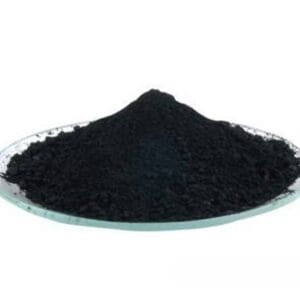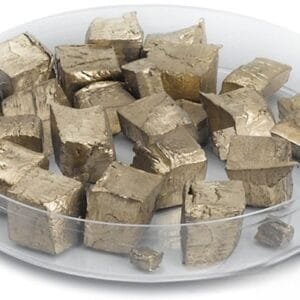Zinc Antimony Pellet Evaporation Material
Introduction
Zinc Antimony Pellet Evaporation Material is a high-purity alloy evaporation source designed for use in thermal and electron-beam (e-beam) evaporation systems. This binary compound of zinc (Zn) and antimony (Sb) provides excellent film uniformity, adhesion, and stability, making it suitable for thin film deposition in electronics, optics, and semiconductor research. The Zn–Sb system is particularly valued for its tunable electronic and thermoelectric properties.
Detailed Description
Zinc Antimony (ZnSb) combines the electrical conductivity of zinc with the thermoelectric efficiency and chemical stability of antimony. The pellets are fabricated through precise melting and solidification processes to achieve high homogeneity and density. The composition can be adjusted—commonly Zn₄Sb₃ or near-stoichiometric ZnSb—to meet specific film property requirements.
When used in evaporation, ZnSb pellets evaporate cleanly, forming films with smooth morphology and low defect density. The alloy’s stable vapor pressure and excellent thermal behavior allow consistent deposition even under high vacuum and elevated temperatures.
Key Features:
High-purity (≥99.9%) alloy ensuring clean film formation.
Stable evaporation rate and reproducible deposition behavior.
Uniform composition suitable for both resistance and e-beam evaporation.
Custom pellet sizes for crucibles and evaporation sources.
Applications
Zinc Antimony pellets are widely used in:
Thermoelectric thin films – for high-efficiency power generation and cooling devices.
Semiconductor coatings – ZnSb layers for junctions and barrier materials.
Optical coatings – reflective and functional films for IR optics.
R&D and material science – studies of p-type semiconductors and layered alloy films.
Energy devices – advanced thin films for energy conversion and solid-state cooling.
Technical Parameters
| Parameter | Typical Value / Range | Importance |
|---|---|---|
| Composition | ZnSb or Zn₄Sb₃ (custom) | Determines thermoelectric and film properties |
| Purity | 99.9% – 99.999% | Reduces film contamination |
| Melting Point | ~600 – 650 °C | Compatible with standard evaporation systems |
| Density | 6.4 – 6.7 g/cm³ | Ensures consistent evaporation |
| Form | Pellets / Chunks / Pieces | Fits crucibles and e-beam pockets |
Comparison with Related Materials
| Material | Key Advantage | Typical Application |
|---|---|---|
| Zinc Antimony (ZnSb) | Good thermoelectric efficiency | Energy conversion films |
| Antimony (Sb) | High reflectivity and conductivity | Optical coatings |
| Zinc (Zn) | High conductivity, easy evaporation | Transparent films |
| Bismuth Telluride (Bi₂Te₃) | Excellent thermoelectric properties | Cooling and power devices |
FAQ
| Question | Answer |
|---|---|
| Can ZnSb pellets be customized? | Yes, size, purity, and Zn:Sb ratios can be adjusted. |
| What crucible materials are recommended? | Alumina, graphite, or tungsten crucibles. |
| Are these pellets suitable for e-beam evaporation? | Yes, they perform well under both resistance and e-beam systems. |
| How are they packaged? | Vacuum-sealed in inert atmosphere, cushioned for export safety. |
| What industries use ZnSb the most? | Thermoelectric, semiconductor, and optical coating industries. |
Packaging
Each Zinc Antimony Pellet Evaporation Material is vacuum-sealed in an inert environment to prevent oxidation. Packaging includes anti-static bags, foam cushioning, and export-grade cartons or wooden boxes for secure shipment.
Conclusion
Zinc Antimony evaporation pellets offer a reliable and efficient source for producing uniform thin films with excellent electrical and thermal characteristics. Their versatility and stability make them ideal for cutting-edge thermoelectric and semiconductor applications.
For detailed specifications and quotations, please contact us at [sales@thinfilmmaterials.com].


 MSDS File
MSDS File



Reviews
There are no reviews yet.